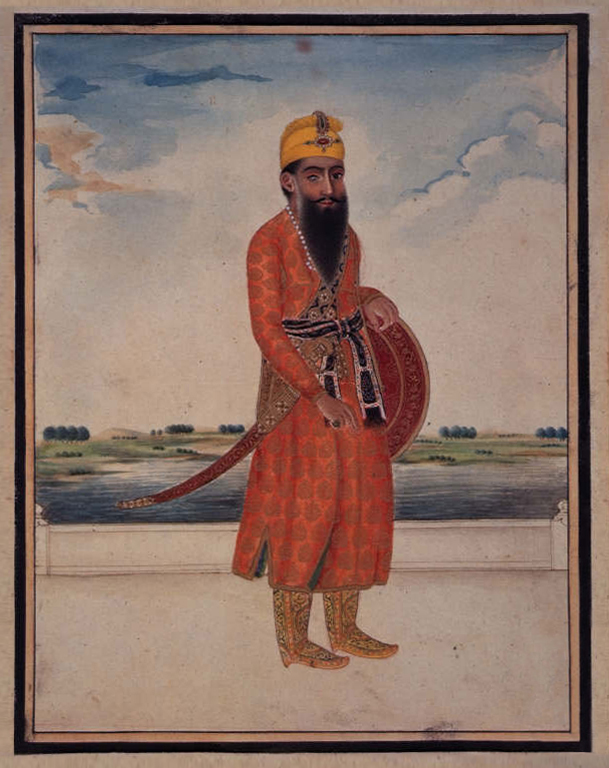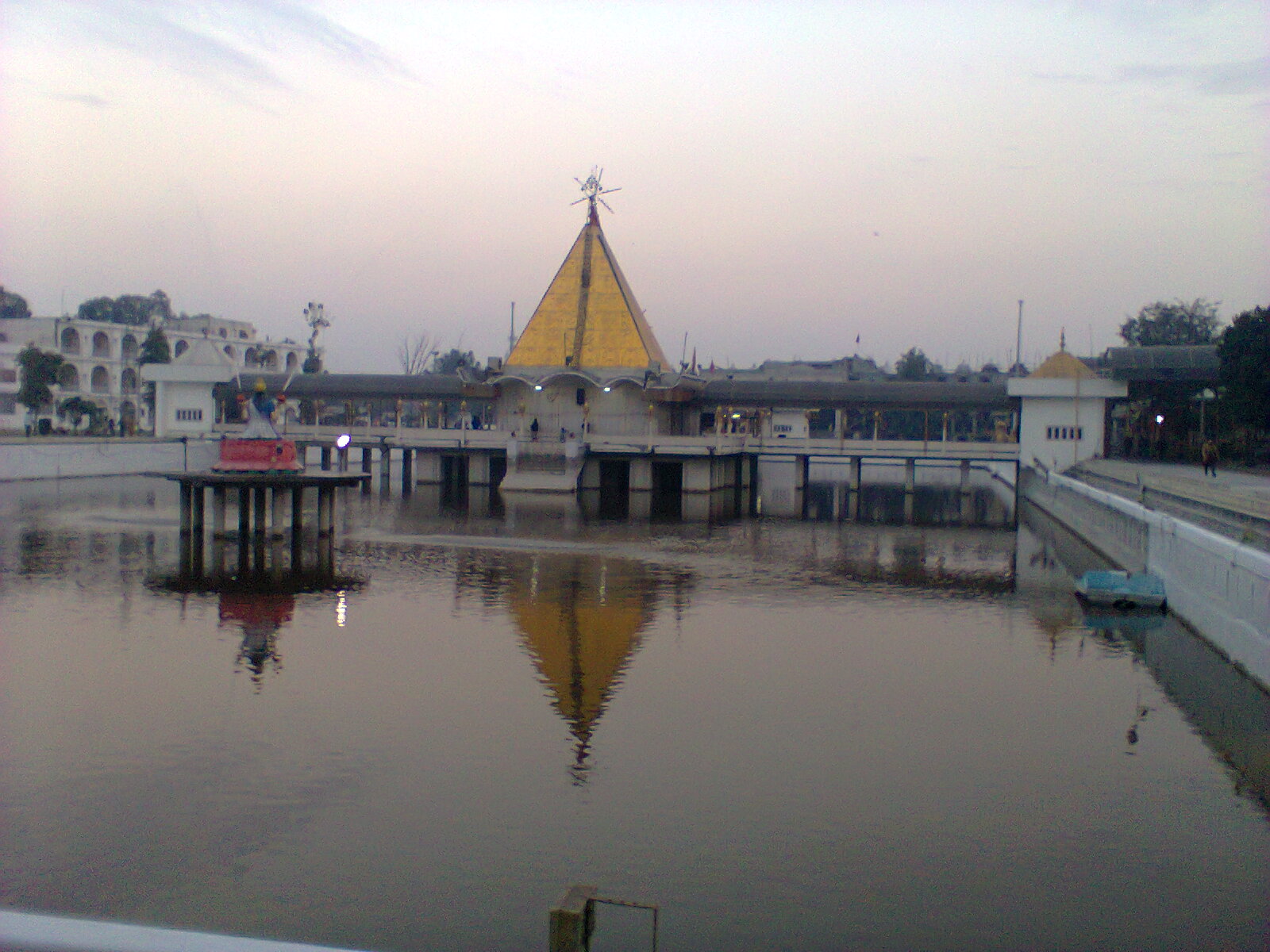|
Shardha Ram Phillauri
Shardha Ram Phillauri (September 1837 Singh Bedi, Harmohinder. ''Shardha Ram Granthawali''. Nirmal Publisher. (A three-volume work by the dean and head of the Guru Nanak Dev University Hindi Department.) – 24 June 1881) was an Indian writer, poet and social reformer, known for his contributions to Hindi and Punjabi literature. He is best known for his Hindu religious hymn Om Jai Jagdish Hare and ''Bhagyawati'', one of the first novels in Hindi. Phillauri has also been called the "father of modern Punjabi prose". Born in Phillaur, he visited cities across Punjab and died in Lahore in 1881. Biography Shardha Ram was born in September 1837, to a Punjabi Hindu Brahmin family in the town of Phillaur in the Sikh Empire under the reign of Ranjit Singh.Walia, Varinda"Hindi novel’s first cradle."''The Tribune'' (17 March 2005).Maitray, Mohan"The creator of Om Jai Jagdish Hare."''The Tribune'' (27 September 1998). His father, Jai Dyalu, was an astrologer. Their gotra was Moudgi ... [...More Info...] [...Related Items...] OR: [Wikipedia] [Google] [Baidu] |
Pandit
A pandit (; ; also spelled pundit, pronounced ; abbreviated Pt. or Pdt.) is an individual with specialised knowledge or a teacher of any field of knowledge in Hinduism, particularly the Vedic scriptures, dharma, or Hindu philosophy; in colonial-era literature, the term generally refers to lawyers specialized in Hindu law. Whereas, today the title is used for experts in other subjects, such as music. Pandit entered English as the loanword pundit, referring to a person who offers opinion in an authoritative manner on a particular subject area (typically politics, the social sciences, technology or sport), usually through the mass media. Ustad is the equivalent title for a Muslim man in the musical sense. The equivalent titles for a Hindu woman are Vidushi, Pandita, or Panditain; however, these titles are not currently in widespread use. In Sanskrit, pandit generally refers to any "wise, educated or learned man" with specialized knowledge. The term is derived from ' () which means ... [...More Info...] [...Related Items...] OR: [Wikipedia] [Google] [Baidu] |
Guru Nanak Dev University
Guru Nanak Dev University is a Public State University in Amritsar, India. It also offers many higher studies degree courses online. The university's campus is spread over . Campus Guru Nanak Dev University campus is spread over 500 acres (200 ha) near Kot Khalsa, approximately eight km (5.0 mi) west of Amritsar on the Amritsar-Lahore highway, next to Khalsa College. The university was founded in 24th of November, 1969 and is named after the first Sikh Guru Guru ( ; International Alphabet of Sanskrit Transliteration, IAST: ''guru'') is a Sanskrit term for a "mentor, guide, expert, or master" of certain knowledge or field. In pan-Indian religions, Indian traditions, a guru is more than a teacher: tr ..., Guru Nanak Dev. The university is home to several research centers and institutes, including the National Institute of Punjabi Language, Literature and Culture, the Indian Institute of Tourism and Travel Management, and the Indian Institute of Public Administration. ... [...More Info...] [...Related Items...] OR: [Wikipedia] [Google] [Baidu] |
Propaganda
Propaganda is communication that is primarily used to influence or persuade an audience to further an agenda, which may not be objective and may be selectively presenting facts to encourage a particular synthesis or perception, or using loaded language to produce an emotional rather than a rational response to the information that is being presented. Propaganda can be found in a wide variety of different contexts. Beginning in the twentieth century, the English term ''propaganda'' became associated with a Psychological manipulation, manipulative approach, but historically, propaganda had been a neutral descriptive term of any material that promotes certain opinions or ideology, ideologies. A wide range of materials and media are used for conveying propaganda messages, which changed as new technologies were invented, including paintings, cartoons, posters, pamphlets, films, radio shows, TV shows, and websites. More recently, the digital age has given rise to new ways of dissemina ... [...More Info...] [...Related Items...] OR: [Wikipedia] [Google] [Baidu] |
Mahabharata
The ''Mahābhārata'' ( ; , , ) is one of the two major Sanskrit Indian epic poetry, epics of ancient India revered as Smriti texts in Hinduism, the other being the ''Ramayana, Rāmāyaṇa''. It narrates the events and aftermath of the Kurukshetra War, a war of succession between two groups of princely cousins, the Kauravas and the Pandava, Pāṇḍavas. It also contains Hindu philosophy, philosophical and devotional material, such as a discussion of the four "goals of life" or ''puruṣārtha'' (12.161). Among the principal works and stories in the ''Mahābhārata'' are the ''Bhagavad Gita'', the story of Damayanti, the story of Shakuntala, the story of Pururava and Urvashi, the story of Savitri and Satyavan, the story of Kacha (sage), Kacha and Devayani, the story of Rishyasringa and an Ramopakhyana, abbreviated version of the ''Rāmāyaṇa'', often considered as works in their own right. Traditionally, the authorship of the ''Mahābhārata'' is attributed to Vyasa, Vy ... [...More Info...] [...Related Items...] OR: [Wikipedia] [Google] [Baidu] |
Missionary
A missionary is a member of a Religious denomination, religious group who is sent into an area in order to promote its faith or provide services to people, such as education, literacy, social justice, health care, and economic development.Thomas Hale 'On Being a Missionary' 2003, William Carey Library Pub, . In the Bible translations into Latin, Latin translation of the Bible, Jesus, Jesus Christ says the word when he sends the disciples into areas and commands them to preach the gospel in his name. The term is most commonly used in reference to Christian missions, but it can also be used in reference to any creed or ideology. The word ''mission'' originated in 1598 when Jesuits, the members of the Society of Jesus sent members abroad, derived from the Latin (nominative case, nom. ), meaning 'act of sending' or , meaning 'to send'. By religion Buddhist missions The first Buddhist missionaries were called "Dharma Bhanaks", and some see a missionary charge in the symbolism ... [...More Info...] [...Related Items...] OR: [Wikipedia] [Google] [Baidu] |
Persian Language
Persian ( ), also known by its endonym and exonym, endonym Farsi (, Fārsī ), is a Western Iranian languages, Western Iranian language belonging to the Iranian languages, Iranian branch of the Indo-Iranian languages, Indo-Iranian subdivision of the Indo-European languages. Persian is a pluricentric language predominantly spoken and used officially within Iran, Afghanistan, and Tajikistan in three mutual intelligibility, mutually intelligible standard language, standard varieties, respectively Iranian Persian (officially known as ''Persian''), Dari, Dari Persian (officially known as ''Dari'' since 1964), and Tajik language, Tajiki Persian (officially known as ''Tajik'' since 1999).Siddikzoda, S. "Tajik Language: Farsi or not Farsi?" in ''Media Insight Central Asia #27'', August 2002. It is also spoken natively in the Tajik variety by a significant population within Uzbekistan, as well as within other regions with a Persianate society, Persianate history in the cultural sphere o ... [...More Info...] [...Related Items...] OR: [Wikipedia] [Google] [Baidu] |
Astrologer
Astrology is a range of Divination, divinatory practices, recognized as pseudoscientific since the 18th century, that propose that information about human affairs and terrestrial events may be discerned by studying the apparent positions of Celestial objects in astrology, celestial objects. Different cultures have employed forms of astrology since at least the 2nd millennium BCE, these practices having originated in Calendrical calculation, calendrical systems used to predict seasonal shifts and to interpret celestial cycles as signs of divine communications. Most, if not all, cultures have attached importance to what they observed in the sky, and some—such as the Hindu astrology, Hindus, Chinese astrology, Chinese, and the Maya civilization, Maya—developed elaborate systems for predicting terrestrial events from celestial observations. Western astrology, one of the oldest astrological systems still in use, can trace its roots to 19th–17th century BCE Mesopotamia, fr ... [...More Info...] [...Related Items...] OR: [Wikipedia] [Google] [Baidu] |
The Tribune (Chandigarh)
''The Tribune'' is an Indian English-language daily newspaper published from Amritsar, Jalandhar, Ludhiana, Bathinda, Chandigarh and Gurgaon, Gurugram. It was founded on 2 February 1881, in Lahore, Punjab Province (British India), Punjab (now in Pakistan), by Sardar Dyal Singh Majithia, a philanthropist, and is run by a trust comprising five persons as trustees. It is a major Indian newspaper with a worldwide circulation. In India, it is among the leading English daily for Punjab, India, Punjab, Haryana, Himachal Pradesh, and the Chandigarh, Union Territory of Chandigarh. Overview The present Editor-in-Chief of ''The Tribune'' is Jyoti Malhotra. ''The Tribune'' has two sister publications: ''Dainik Tribune'' (in Hindi) and ''Punjabi Tribune'' (in Punjabi language, Punjabi). Naresh Kaushal is the Editor of ''Dainik Tribune'' and Arvinder Kaur Johal is the Officiating Editor of the ''Punjabi Tribune''. The online edition of ''The Tribune'' was launched in July 1998, and the onlin ... [...More Info...] [...Related Items...] OR: [Wikipedia] [Google] [Baidu] |
Ranjit Singh
Ranjit Singh (13 November 1780 – 27 June 1839) was the founder and first maharaja of the Sikh Empire, in the northwest Indian subcontinent, ruling from 1801 until his death in 1839. Born to Maha Singh, the leader of the Sukerchakia Misl, Ranjit Singh survived smallpox in infancy but lost sight in his left eye. At the age of ten years old, he fought his first battle alongside his father. After his father died around Ranjit's early teenage years, he became leader of the Misl. Ranjit was the most prominent of the Sikh leaders who opposed Zaman Shah, the ruler of Durrani Empire, during his third invasion. After Zaman Shah's retreat in 1799, he captured Lahore from the Sikh triumvirate which had been ruling it since 1765. At the age of 21, he was formally crowned at Lahore. Before his rise, the Punjab had been fragmented into a number of warring Sikh (known as misls), Muslim and Hindu states. A large part of Punjab was under direct Durrani control. By 1813, Ranjit Sin ... [...More Info...] [...Related Items...] OR: [Wikipedia] [Google] [Baidu] |
Brahmin
Brahmin (; ) is a ''Varna (Hinduism), varna'' (theoretical social classes) within Hindu society. The other three varnas are the ''Kshatriya'' (rulers and warriors), ''Vaishya'' (traders, merchants, and farmers), and ''Shudra'' (labourers). The traditional occupation of Brahmins is that of priesthood (purohit, pandit, or pujari) at Hindu temples or at socio-religious ceremonies, and the performing of rite of passage rituals, such as solemnising a wedding with hymns and prayers.James Lochtefeld (2002), Brahmin, The Illustrated Encyclopedia of Hinduism, Vol. 1: A–M, Rosen Publishing, , page 125 Traditionally, Brahmins are accorded the supreme ritual status of the four social classes, and they also served as spiritual teachers (guru or acharya). In practice, Indian texts suggest that some Brahmins historically also became agriculturalists, warriors, traders, and had also held other occupations in the Indian subcontinent.GS Ghurye (1969), Caste and Race in India, Popular Prakasha ... [...More Info...] [...Related Items...] OR: [Wikipedia] [Google] [Baidu] |
Punjabi Hindu
Punjabi Hindus are adherents of Hinduism who identify ethnically, linguistically, culturally, and genealogically as Punjabis and are natives of the Punjab region of the Indian subcontinent. Punjabi Hindus are the third-largest religious group of the Punjabi community, after the Punjabi Muslims and the Punjabi Sikhs. While Punjabi Hindus mostly inhabit the Indian state of Punjab, as well as Haryana, Himachal Pradesh, Delhi, and Chandigarh today, many have ancestry across the greater Punjab region, which was partitioned between India and Pakistan in 1947. Punjabi Hindus comprise a diverse range of castes, including Brahmins (Saraswat, Mohyal), upper castes like Khatris, Rajputs, Aroras, Vaishyas (Baniyas like Agarwal, Khandelwal, Maheshwari, Oswal), and artisans and service-based communities like Lohar, Sunar, Kumhar, Nai, Dhobi. A number of castes such as Saini, Gujjar, Prajapati are classified as OBC whilst Chamar, Balmiki, Mazhabi come under the scheduled caste classif ... [...More Info...] [...Related Items...] OR: [Wikipedia] [Google] [Baidu] |







